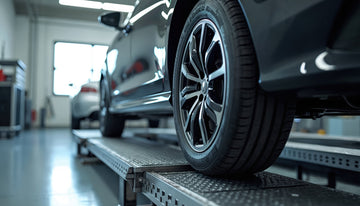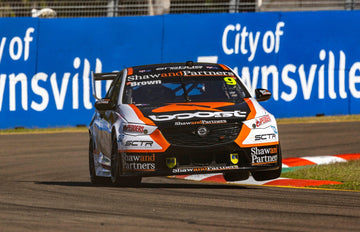When it comes to getting the best performance out of your vehicle, wheel alignment plays a critical role. However, not all alignments are created equal — the ideal setup for the street is very different from what’s needed for the track.
At Supashock, we believe that understanding these differences is crucial to achieving the right balance between handling, comfort, and safety. Here’s a breakdown of how street and track alignments differ, and why professional alignment tailored to your needs is essential.
What Is Wheel Alignment?
Wheel alignment refers to adjusting the angles of your car’s wheels to ensure they are set correctly relative to the vehicle and the road.
The main parameters are:
- Camber: Tilt of the wheels inward or outward.
- Caster: Tilt of the steering axis forward or backward.
- Toe: Whether the wheels point toward each other (toe-in) or away (toe-out).
These settings directly affect handling, tire wear, and stability.
Street Alignment: Focus on Comfort and Longevity
A street alignment is optimised for daily driving — aiming to provide a smooth ride, stable handling, even tire wear, and good fuel economy.
Typical goals for street alignment:
- Minimal negative camber (around -0.5° to -1.5°) to balance cornering grip without causing excessive inner tire wear.
- Mild or neutral toe settings (slight toe-in or zero) to promote straight-line stability.
-
Moderate caster (higher caster angles improve high-speed stability and steering feel).
Why It Matters:
- You’re driving on uneven, variable road surfaces.
- You want to maximise tire life (tyres are expensive!).
-
Ride comfort is more important than ultimate performance.
In short: A street alignment is about a balance — making the car safe, predictable, and easy to live with.
Track Alignment: Focus on Grip and Precision
A track alignment prioritises maximum grip, sharp steering response, and dynamic balance during high-speed cornering, braking, and acceleration.
Typical goals for track alignment:
- More negative camber (often -2.0° to -3.5°) to maintain full tire contact during hard cornering.
- Aggressive toe settings (slight toe-out in front for faster turn-in, neutral or slight toe-in at the rear for stability).
-
Higher positive caster (up to +7° or more) to improve high-speed cornering stability and self-aligning torque.
Why It Matters:
- The track offers consistent, smooth surfaces — letting you push the limits of mechanical grip.
- You need the car to be highly responsive to quick steering inputs.
-
Tire wear and ride comfort are secondary concerns compared to lap times and feedback.
In short: A track alignment sacrifices some comfort and tire longevity for maximum performance.
Key Differences at a Glance
|
Feature |
Street Alignment |
Track Alignment |
|
Camber |
Mild Negative (-0.5° to -1.5°) |
Aggressive Negative (-2.0° to -3.5°) |
|
Toe |
Neutral or slight toe-in |
Slight toe-out (front), stability focused (rear) |
|
Caster |
Moderate (+5° to +7°) |
Higher (+6° to +8°) |
|
Priorities |
Comfort, tire longevity, fuel economy |
Grip, sharp handling, lap times |
|
Ride Quality |
Smooth and stable |
Firmer, twitchier |
|
Tire Wear |
Even |
Accelerated (especially inside edge) |
Can You Have a "Dual Purpose" Setup?
Yes — but it’s a compromise.
Some performance enthusiasts who daily drive their cars and attend track days choose mild track settings that aren't too aggressive for the street.
Others install adjustable suspension components (like camber plates or adjustable arms) so they can switch between settings depending on the event.
Supashock tip: Talk to a professional about your specific needs. We can help design an alignment that gives you the best of both worlds, based on your driving style and expectations.
Conclusion: Choose Alignment Based on How You Drive
Whether you're aiming for maximum comfort on your daily commute or maximum cornering grip at the track, alignment matters.
Professional installation and setup ensure your vehicle performs safely, predictably, and efficiently — wherever you drive it.
At Supashock, we offer precision wheel alignment services tailored to street, performance, and motorsport needs.
Want help tuning your suspension setup?
Contact the Supashock team today— our suspension experience spans decades!




